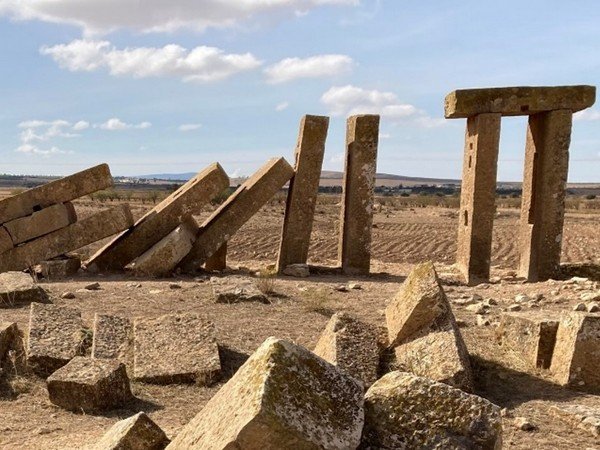A monumental Roman-era complex, dedicated to the large-scale production of olive oil, has been discovered in central Tunisia, revealing an industrial and economic hub far more advanced than previously believed.
Archaeologists from the University of Ca’ Foscari of Venice, in partnership with the University of La Manouba in Tunisia and the Complutense University of Madrid, have uncovered the sprawling 33-hectare site at Henchir el Begar. The discovery, announced on November 17, is set to redefine the role of North Africa in the Roman Empire’s supply chain.
Dubbed one of the largest agricultural exploitation complexes ever found, the site was a veritable factory for olive oil, a staple of Roman life used for cooking, lighting, and religious rites. The facility was operational from the 3rd to the 6th centuries AD and features two massive sectors, each equipped with large-scale oil presses.
“This mission offers an unprecedented perspective on the agricultural and socio-economic organization of the frontier regions of Roman Africa,” said Professor Luigi Sperti, co-director of the archaeological mission. He emphasized the product’s vital role, noting, “Olive oil was an extremely important product, used even as fuel for lighting.”

The site’s significance is further cemented by its link to a known historical figure. Evidence suggests the complex was part of an estate owned in the 2nd century by Lucillius Africanus, a member of the senatorial elite in Rome. An unrelated Latin inscription, dating to 138 AD, which grants the estate a bimonthly market, confirms the area was a major commercial center.
Beyond the industrial machinery, the team found water cisterns, a collection basin, and the remnants of a rural village, indicating a mixed community of Roman settlers and local inhabitants. The discovery of farm tools and mill remains shows the site also processed grains.
Perhaps the most revealing finding came from ground-penetrating radar surveys, which mapped a dense network of dwellings, roads, and warehouses. This paints a picture of a vibrant, organized community—a far cry from the isolated periphery often imagined for Rome’s African provinces. This 33-hectare discovery confirms that the region was not a remote outpost but a beating heart of the Empire’s essential oil industry.
TunisianMonitorOnline (NejiMed)




